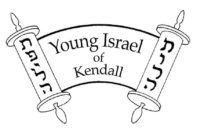¡¡¡GUAU!!!
¿Qué hace a una persona destacada y virtuosa?
El rabino Meir dijo:
Quien se dedica al estudio de la Torá por sí mismo merece muchas cosas;
No sólo eso, sino que la creación del mundo entero vale la pena sólo por él.
Se le llama “Amigo, Amado”.
Ama al Omnipresente.
Él ama a sus criaturas.
Él alegra al Omnipresente.
Él alegra a sus criaturas.
La Torá lo reviste de humildad y temor a Hashem.
Lo hace apto para ser tzadik, devoto, recto y fiel.
Lo aleja del pecado y lo acerca al mérito.
La gente disfruta de él consejos, sabiduría, comprensión y fortaleza…
La Torá le otorga realeza, dominio y juicio analítico.
Se le revelan los secretos de la Torá.
Se vuelve como una fuente que se fortalece constantemente y como un río incesante .
Se vuelve modesto, paciente y perdona los insultos a sí mismo. La Torá lo engrandece y lo exalta por encima de todas las cosas.( 1)
Esta mishná describe el carácter de un individuo notable. La fuente de sus atributos es su devoción a Hashem y a la Torá. Su compromiso no se debe a la búsqueda de recompensa o a evitar el castigo. Más bien es por el bien del Cielo. Él encuentra favor con Hashem y con gente.
Una persona así se destaca entre la multitud. Parece tan perfecto. Sin embargo, si nos fijamos en la lista de todos sus logros, uno parece estar fuera de lugar. Él es “perdonador de los insultos a sí mismo”. ¿En realidad? ¿Quién insultaría a un individuo tan santo? Incluso los más justos están sujetos a críticas. Habrá gente que buscará encontrar fallas. En algunos casos, el objetivo no es sólo derribar, sino incluso destruir. Parece difícil entender cómo hay gente tan descarada como para intentar socavar a una persona que es notablemente de gran virtud, y aun así ocurre. Zimri, un líder judío públicamente cometió un acto de libertinaje. Esta fue una profanación de Hashem que justificaba aniquilación de Klal Israel. Pinjás fue un héroe que audazmente detuvo la violación y castigó a los delincuentes. Sólo él defendió el honor de Hashem, salvando así a Klal Israel.
Sin embargo, hubo quienes tuvieron una reacción aparentemente sorprendente. En lugar de expresar admiración y gratitud, hablaron vergonzosamente de Pinjás. “¿Haz visto? Aquí hay una persona cuyo abuelo materno traía ofrendas para la adoración de ídolos y mató a un príncipe de una tribu de Israel!” (2)
Pinjás había salvado el día. Eso no impidió que algunas personas encontraran defectos. También sucede frecuentemente. Es una técnica que se emplea para menoscabar: arrojar suciedad e insultos con la esperanza que algo se quedará. Ni siquiera los más justos se libran de tales ataques.( 3)
Hay un dicho popular: Donde hay humo, hay fuego. Eso significa que si la gente dice cosas, debe haber algo en ello. Sin embargo, eso no es necesariamente cierto.
¿Estamos influenciados por la información negativa que se lanza sobre los demás o podemos discernir y reconocer cuándo es la fuente la que está contaminada?
Shabat Shalom,
Rabino Hershel D. Becker
Traducido por Miriam Levy y Sara Slomianski
1 Pirkei Avot 6:1
2 Rashi Pinjas 25:11; Sanhedrin 82b
3 U’lesitja Elyon Pinjas 25:11; Divrei Yoel MiSatmar
